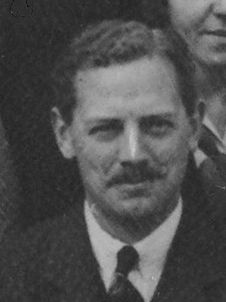John Masson Gulland facts for kids
John Masson Gulland (born October 14, 1898 – died October 26, 1947) was a Scottish chemist and biochemist. He made very important discoveries about DNA, which helped other scientists like James Watson and Francis Crick figure out its famous double helix shape. People called him "a great nucleic acid chemist" because of his work. He also helped start groups like the Scottish Seaweed Research Association.
Contents
About John Masson Gulland's Life
John Masson Gulland was born in Edinburgh, Scotland. He was the only son of Helen Orme Masson and Dr. George Lovell Gulland. His family included many interesting people, like his grandfather David Masson, who was a writer, and his aunt Emily Rosaline Orme, who fought for women's right to vote. His father later became a professor at the University of Edinburgh.
John went to Edinburgh Academy from 1906 to 1917. During the First World War, he joined the army as a 2nd Lieutenant in the Royal Engineers. After the war, he studied at the University of Edinburgh, earning a science degree in 1921. He then continued his studies at the University of St Andrews and the University of Manchester. He worked with a famous chemist named Professor Robert Robinson at these universities and later at the University of Oxford.
In 1924, John became a chemistry demonstrator at Oxford. In 1926, he became a lecturer at Balliol College. He was recognized for his work and became a Fellow of the Royal Society of Edinburgh in 1927.
Later, in 1931, he moved to the University of London to teach biochemistry. In 1936, he became a Professor of Chemistry at University College Nottingham.
During the Second World War, John helped the government as a Gas Advisor and worked for the Ministry of Supply. In 1945, he was elected a Fellow of the Royal Society of London, which is a very high honor for scientists.
Sadly, John's life ended too soon in 1947 when he was killed in a train accident near Berwick-on-Tweed. He was only 49 years old. He is buried in Grange Cemetery in Edinburgh.
Gulland's Important Work on DNA
John Masson Gulland played a key part in the research that led to the discovery of the DNA structure by Watson and Crick in 1953. His team at Nottingham, including Denis Jordan, Cedric Threlfall, and Michael Creeth, published three important papers in 1947.
- One paper showed how to get high-quality DNA samples without damaging them.
- Another paper measured how thick DNA was.
- The third paper proved that DNA had special connections called "hydrogen bonds" inside its structure. These bonds were very important for understanding how DNA works.
Five years later, James Watson first misunderstood the Nottingham team's work. But he soon realized his mistake. He later wrote that reading Gulland's and Jordan's papers made him understand how important the hydrogen bonds were. Once Watson understood these bonds, figuring out the DNA structure took only about a week or two!
Other scientists, like Rosalind Franklin and Raymond Gosling, also recognized Gulland's team's work. They mentioned that Gulland and his helpers showed that certain parts of DNA's bases were hidden, while other parts were easy to reach.
Over time, less attention was given to the importance of Gulland's team. By 1953, when DNA was fully decoded, Gulland had already passed away, and his colleagues had moved on. However, in recent years, the University of Nottingham has honored their contributions. Books like The Annotated and Illustrated Double Helix (2012) also acknowledge their vital work.
Some people wonder if Gulland's team might have discovered the DNA structure themselves if things had turned out differently.
Gulland's Family Life
In 1924, John Masson Gulland married Ruth Madeline Ida Russell. She was also a chemistry student whom he met in Edinburgh. They had two daughters together.
Images for kids




